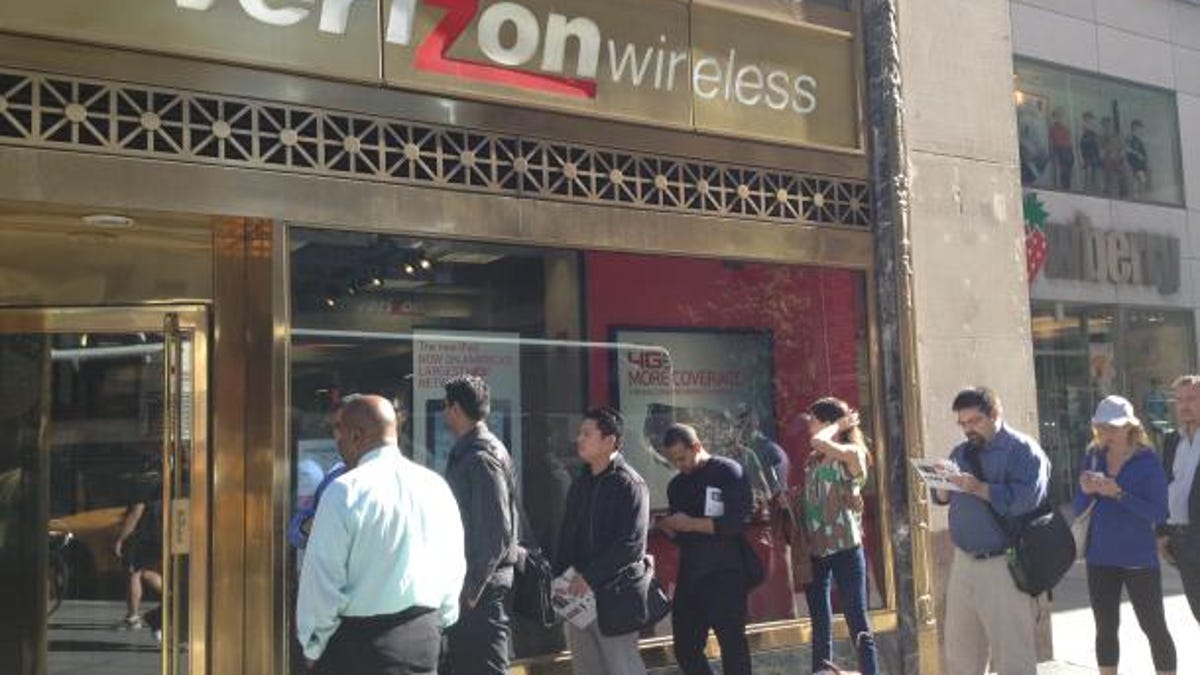No iPhone jinx: Verizon Q3 profit up 15 percent to $1.6B
While the iPhone typically hits carriers with a hefty cost, Verizon continues to show impressive earnings and wireless subscriber growth.

Verizon managed a rare feat in the third quarter: juggling a spike in iPhone sales with double-digit earnings growth.
The two rarely go hand in hand, as the more iPhones a carrier sells, the higher the subsidy it has to pay to Apple (without that subsidy, your iPhone 5 would cost a minimum of $650), and the larger the hit it takes to its bottom line.
Through a combination of cost cuts and an effort to squeeze as much profit out of the rest of the business, Verizon managed to avoid that fate. Today, it posted a third-quarter profit of $1.59 billion, or 56 cents a share, compared with a year-earlier profit of $3.54 billion, or 49 cents a share. Excluding one-time costs related to patent litigation settlements, the company earned 64 cents a share. Revenue, meanwhile, rose 3.9 percent to $29 billion.
Analysts had an average estimate of 64 cents a share in earnings and $29 billion in revenue, according to Thomson Reuters.
That could change in the fourth quarter as iPhone sales ramp up. Since the iPhone 5 launched with only a week to go in the quarter, Verizon could only sell so many units. It was also hampered by the broader supply constraints that have been affecting Apple. It sold 3.1 million iPhones in the period, with 651,000 of them being iPhone 5 units.
Chief Financial Officer Fran Shammo warned on a conference call today that the iPhone impact would cut into Verizon's profitability a little, but it wouldn't be as bad as a year ago.
The wireless business, which is 45 percent owned by Vodafone, posted service revenue of $16.2 billion, up 7.5 percent from a year ago. It added 1.8 million net new customers, with 1.5 million signing long-term contracts, also known as postpaid customers, to end the quarter with 95.9 million customers. A year ago, it nabbed only 882,000 net new customers, part of a broader trend of slowing customer growth in the wireless market.
Growth was likely driven by the
Verizon sold 6.8 million smartphones in the period, and they made up 53 percent of its base. In addition to the 3.1 million iPhones sold, the company also sold 3.4 million Android smartphones. It added that 4.5 million devices sold in the period were running on its 4G LTE network.
To combat shrinking voice and text message revenue, Verizon over the summer launched its "Share Everything" plan, which acts as a family plan for data, allowing multiple individuals with multiple devices to use data from a single plan. Shammo said that adoption was going faster than expected, with 13 percent of the base already on a shared data plan.
The intent is that consumers bring on more devices that gobble up data beyond the smartphone, with a particular focus on tablets.
"We're confident we will gain postpaid market share in the quarter," Shammo said.
The customer turnover rate for its contract customers, meanwhile, fell slightly to 0.91 percent, while the total turnover rate fell slightly to 1.18 percent.
As with past quarters, Verizon's wireline business continues to shrink, largely on weakness in its business division. Operating revenue fell 2.3 percent to $9.9 billion.
The consumer business continued to grow thanks to its Fios service, which added 119,000 net TV customers and 136,000 Internet customers.
Shammo briefly talked about the pending deals with Sprint Nextel and SoftBank, as well as T-Mobile USA and MetroPCS, saying that consolidation in the industry isn't a surprise. He said the investments from two large foreign companies indicates that there's still growth in the industry, and maintained that Verizon would be able to keep its leadership position.
Updated at 6:52 a.m. PT: to include additional comments from the CFO.

